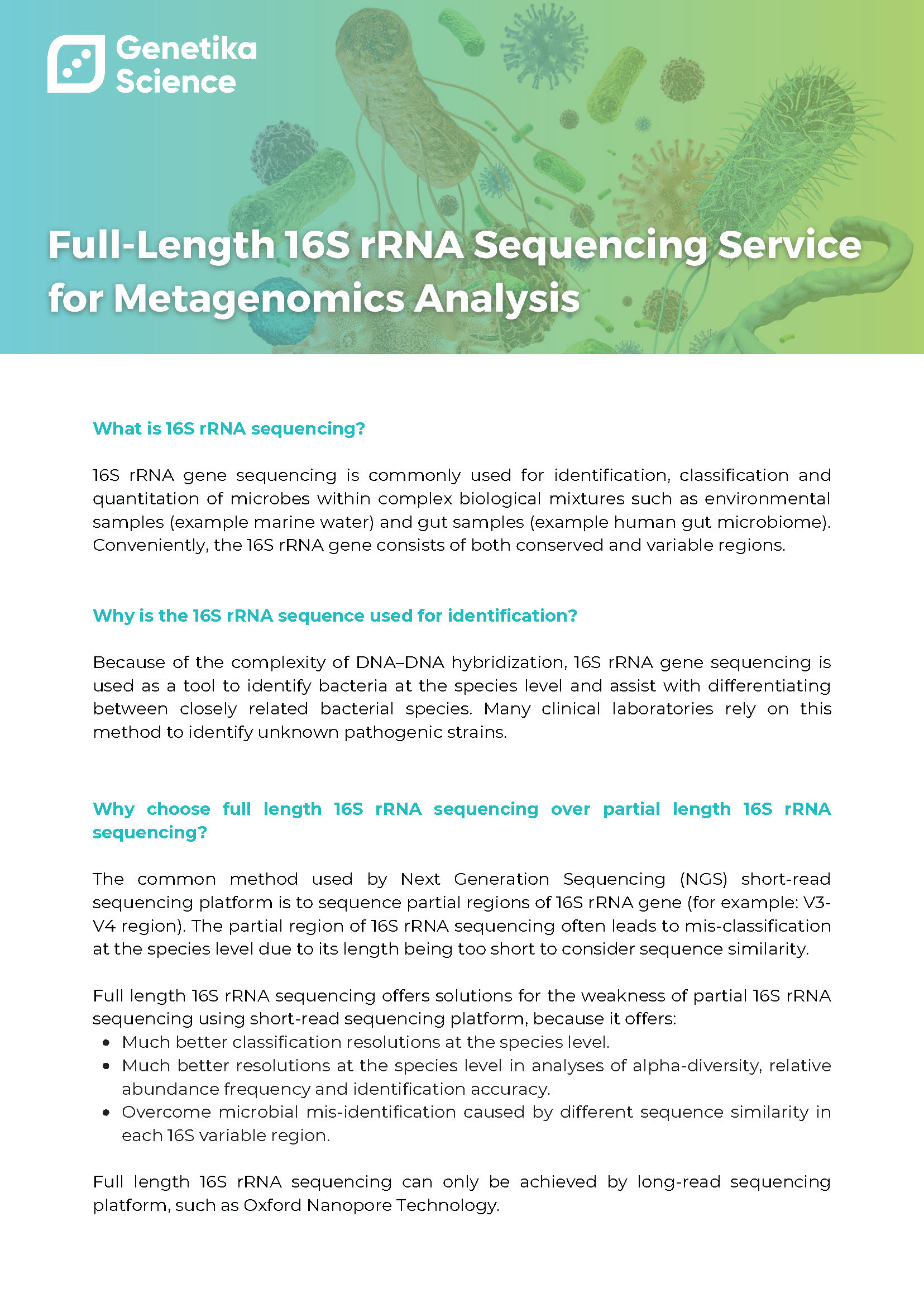
Full-Length 16s rRNA / ITS Metagenomic Sequencing Service
What is 16S rRNA sequencing?
16S rRNA gene sequencing is commonly used for identification, classification and quantitation of microbes within complex biological mixtures such as environmental samples (example marine water) and gut samples (example human gut microbiome).Conveniently, the 16S rRNA ene consists of both conserved and variable regions.
Why is the 16S rRNA sequence used for identification?
Because of the complexity of DNA–DNA hybridization, 16S rRNA gene sequencing is used as a tool to identify bacteria at the species level and assist with differentiating between closely related bacterial species. Many clinical laboratories rely on this method to identify unknown pathogenic strains.
Why choose full length 16S rRNA sequencing over partial length 16S rRNA sequencing?
The common method used by Next Generation Sequencing (NGS) short-read sequencing platform is to sequence partial regions of 16S rRNA gene (for example: V3- V4 region). The partial region of 16S rRNA sequencing often leads to mis classification at the species level due to its length being too short to consider sequence similarity.
Full length 16S rRNA sequencing offers solutions for the weakness of partial 16S rRNA sequencing using short-read sequencing platform, because it offers:
- Much better classification resolutions at the species level.
- Much better resolutions at the species level in analyses of alpha-diversity, relative abundance frequency and identification accuracy.
- Overcome microbial mis-identification caused by different sequence similarity in
each 16S variable region.
Full length 16S rRNA sequencing can only be achieved by long-read sequencing platform, such as Oxford Nanopore Technology.
Genetika Science Indonesia is offering 16S analysis using real-time, long-readnanopore sequencing. The 16S rRNA gene is present in all bacteria and archaea. Thegene is ideal for sequence-based identification of these organisms, particularly inmixed samples, due to the presence of conserved and highly variable regions. Bynarrowing down to a specific region of interest, all the organisms present in thesample can be seen without sequencing unnecessary regions of the genome, makingthe analysis quicker and more economical.

Platform:
GridION X5 (Oxford NanoporeTechnology)
Sample Type:
1. Raw Sample
2. Genomic DNA
DNA Amount (Nanodrop): minimum 50 ng
Volume: minimum 30 uL
Purity: OD 260/280 = 1.8 – 2.0
Some of the key deliverables for 16srRNA data analysis are:
- Sequencing QC
- Reads Classification
- Taxonomical Abundance
- Taxa Abundance Heatmap
- Krona
- Sankey Diagram
- Ternaryplot
- Venn Diagram
- Alpha dan Beta-Diversity Analysis